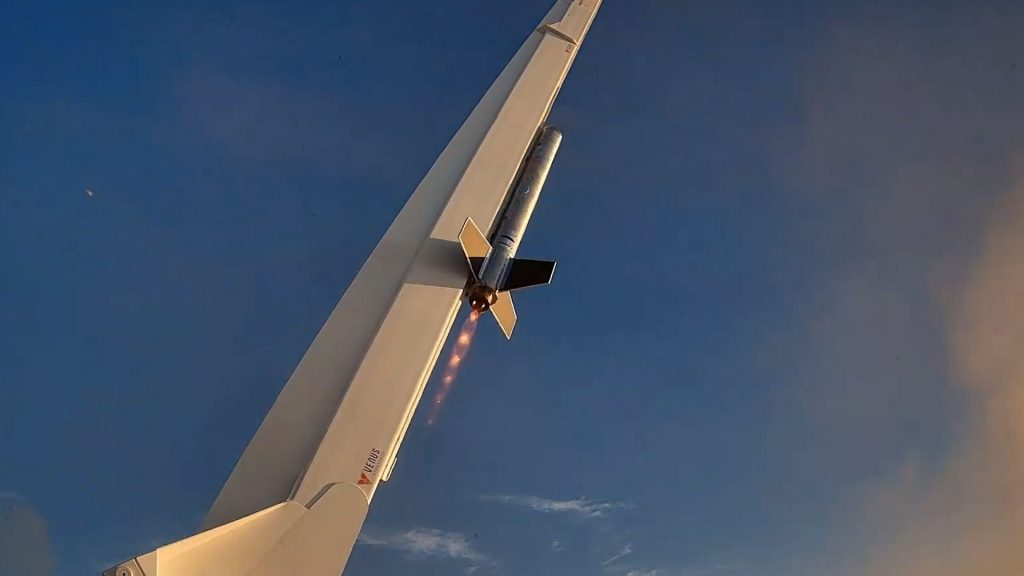Texas startup making history with revolutionary rocket engine

A Texas-based startup just made aviation history. The company completed the first U.S. flight test of a next-generation rocket engine that could be transformational for both hypersonic weaponry and commercial travel.
Based in Houston, the minds behind Venus Aerospace recently took their rotating detonation rocket engine, or RDRE, and demonstrated its airworthiness during a test flight at Spaceport America in New Mexico.
Venus’ co-founder and Chief Technology Officer Andrew Duggleby said that even though his engine uses detonation, the only thing explosive about the tests were the results.
“In fact, we sort of laugh that our marketing team has work to do with the word ‘detonation,’” Duggleby said. “But the scientific word really just means supersonic combustion. And so if I were to pour a strip of gasoline on the ground and then light it on one end, the gasoline doesn’t move, right? But that flame would sort of go from one end to the other.
“And normally, that flame front is moving slower than the speed of sound. That’s what we think of as normal burning — or ‘deflagration’ is the scientific term. In the right conditions, that flame front can go faster than the speed of sound. And that’s detonation.”
Why pressure gain matters in rocket propulsion
If you’ve ever seen the movie “Backdraft,” you’re familiar with the scientific process of detonation, which results in not just heat, but a positive pressure gain. It’s that increase in pressure which Duggleby describes as fundamental to the detonation process. In the world of avionics and rocket engines, the increase in pressure from an RDRE over a traditional design is substantial.
“Detonation engines have been theorized for many, many decades,” Duggleby said. “To really frame this in the right perspective — the SpaceX rocket engine is only about 2% better than the Apollo engines that took astronauts to the moon. And that 2% was fought over for decades.
“This technology is a 10 to 30% jump. So it’s just, just massive.”
Venus eyes dual product strategy
In an interview with Straight Arrow News, Duggleby said now that Venus’ RDRE engine has proven flightworthy, the company will work to develop it into two main product lines.
The first will be a standalone rocket engine that could be used in existing weapons systems, built into new ones, or adapted for different types of vehicles. Duggleby explained that since it’s short and compact, the engine could even work well on moon landers.
However the military decides to use the engine, Duggleby said Venus wants to ensure the Department of Defense can afford to buy enough of them. He said the new RDREs are pricing out to be 10 times cheaper than the hypersonic engines currently in use by the U.S. Navy and Air Force.
“That’s got to make a difference, right?” Duggleby said. “It doesn’t take a rocket scientist to figure out that would change how we would fight in a coming world where hypersonic weapons are a reality.”
Hypersonic weapons are typically defined as maneuverable missiles capable of traveling at five times the speed of sound or faster. Russia and China both claim to have fielded hypersonic weapons. The U.S. is playing catch-up but is closing the gap. The Army and Navy both helped develop the Dark Eagle weapon system, which will have a sea-launched variant soon.
Blending old and new for commercial aviation
While the U.S. military will undoubtedly need numerous hypersonic engines, the commercial sector could also benefit from hypersonic flight. That’s why Venus’ second product line combines the new RDRE with an older technology known as a ramjet.
“Ramjet is basically when the vehicle is flying fast enough, the vehicle itself is compressing the air,” Duggleby explained. “And so when you let that air compress into the engine, you now have all the pressure and temperature just in the air. All you have to do is spray fuel into it, and it combusts.”
In this new design, an RDRE sits in front of a ramjet in one enclosed unit. It’s that combination of new and old technology that Duggleby said could one day be used on commercial airliners.
“A flight across the Pacific or a flight across the Atlantic could be a one to two-hour endeavor,” Duggleby said. “And that really, ultimately changes the world.”
A former college professor and Navy reservist, Duggleby said he was inspired to build the RDRE while repairing U.S. Navy ships in Japan. His wife and fellow Venus co-founder, Sassie, was the only cousin who couldn’t make it to her grandma’s 95th birthday back in the States. Now, we may just be a few years away from being able to cross the world’s largest oceans in the time it takes to watch a movie.





